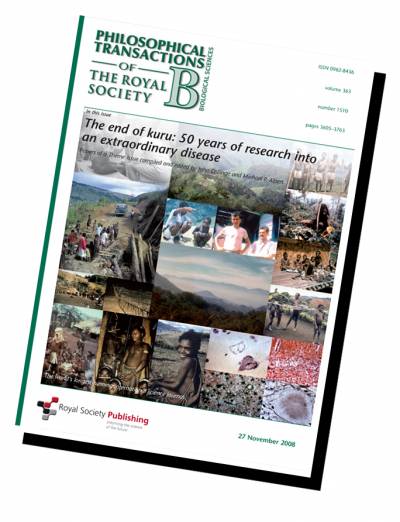Kuru

When the outbreak of bovine spongiform encephalopathy (BSE) in the United Kingdom was followed by the recognition of variant Creutzfeldt-Jakob disease (vCJD) in humans in 1996, kuru acquired a new global relevance. Earlier concerns at the zoonotic potential of BSE and the need to learn from the kuru epidemic had led to the establishment of a collaboration between Professor John Collinge (then funded by the Wellcome Trust at Imperial College Londonand Professor Michael Alpers at the Papua New Guinea Institute of Medical Research (PNGIMR) to reinforce ongoing epidemiological surveillance of kuru and to conduct new scientific investigations on modes of transmission, pathogenesis, genetic susceptibility and supporting anthropological studies. This research programme was incorporated into the MRC Prion Unit on its foundation in 1998.
The work of the established village-based surveillance team was maintained and its scope expanded through the recruitment and training of new staff drawn from local communities, the team being led by Dr Jerome Whitfield throughout. Community participation in the project was enlarged through discussions with village leaders, communities, families and individuals. Kuru project staff held medical clinics in remote areas, provided emergency medical treatment, assisted local health centres and helped the Provincial Malaria Unit. The project addressed the development needs identified by the communities themselves by helping to obtain funding and by utilizing the project’s strong links with the health, education and other divisions of the district and provincial governments.
We have used the term transumption rather than cannibalism to describe the mortuary practices of the South Fore, defined as: ‘the mortuary practice of consumption of the dead and incorporation of the body of the dead person into the bodies of living relatives, thus helping to free the spirit of the dead’. This definition is in sharp contrast to the imaginary cannibal portrayed in Western literature, films and media.
KURU
Kuru is an ataxic variant of Creutzfeldt-Jakob disease (CJD), a transmissible spongiform encephalopathy (TSE) that occurs sporadically in all human populations at an incidence of about 1 per million per annum. It is hypothesised that a sporadic case occurred in the Okapa area in the early 1900s and became the source of an epidemic because of the mortuary practice, universal in this region, of transumption of dead kinfolk at their funeral feast. Women and children of both sexes consumed the infectious material, which explained why they, and only rarely the men, suffered from kuru. The first contact of the Fore with the outside world in the 1950s led to the rapid cessation of transumption and to the first scientific investigations of the disease. Kuru was found to be a fatal progressive neurodegenerative disease, with an average duration of 12 months. In 1966 the transmission of kuru to a laboratory primate, with an incubation period of 2 years after intracerebral inoculation, was reported by D.C. Gajdusek, C. J. Gibbs Jr and M. P. Alpers, thus initiating the study of human prion diseases. The last three cases of kuru occurred in 2003, 2005 and 2009 with incubation periods in excess of 50 years.
RATIONALE OF THE KURU FIELD STUDIES
The MRC Prion Unit at UCL and the PNGIMR conducted rigorous epidemiological surveillance of kuru and clinical studies in the field. From an autopsy, detailed histopathological studies and investigation of the strain properties and tissue distribution of kuru prions were carried out. In the field, extensive genetic studies of the people of the kuru-affected region, neighbouring linguistic groups and both highland and coastal groups more distant from the region were undertaken. These studies were integrated with the work of the Prion Unit on sporadic and variant CJD. This has had a two-way benefit: the established techniques and expertise of the Unit have quickly produced new insights into kuru; the findings in kuru, which is now a completed epidemic, have important implications for the evolution and outcome of the vCJD epidemic.
The details of the mortuary practices of the Fore people provided essential explanatory clues to the mode of transmission of the disease. Further studies undertaken by the Unit have brought in new information to help explain the historical spread of kuru and the temporal and spatial characteristics of the documented epidemic. These findings also have important cultural and anthropological significance in themselves.
Although our fieldwork in Papua New Guinea ceased in 2012, after a period of 17 years, the strong collaboration between the MRC Prion Unit at UCL and the PNGIMR is ongoing, and a wide range of studies are still being carried out on the data and samples collected.
 Close
Close


